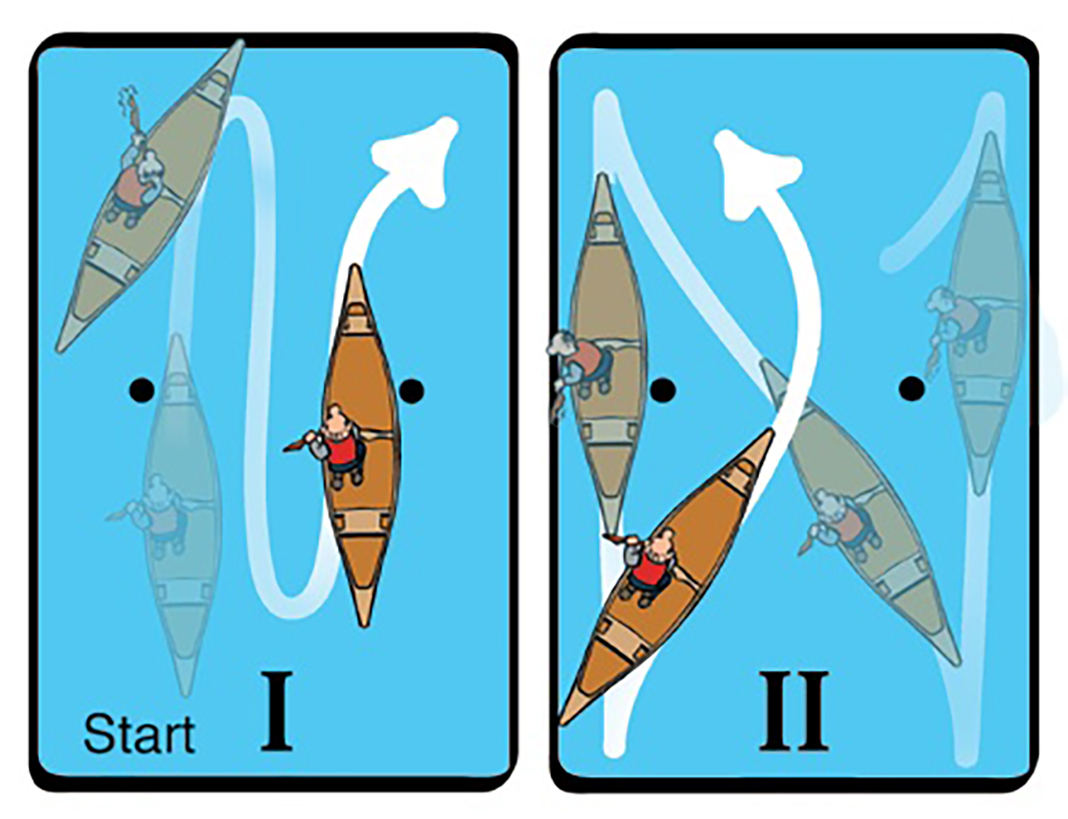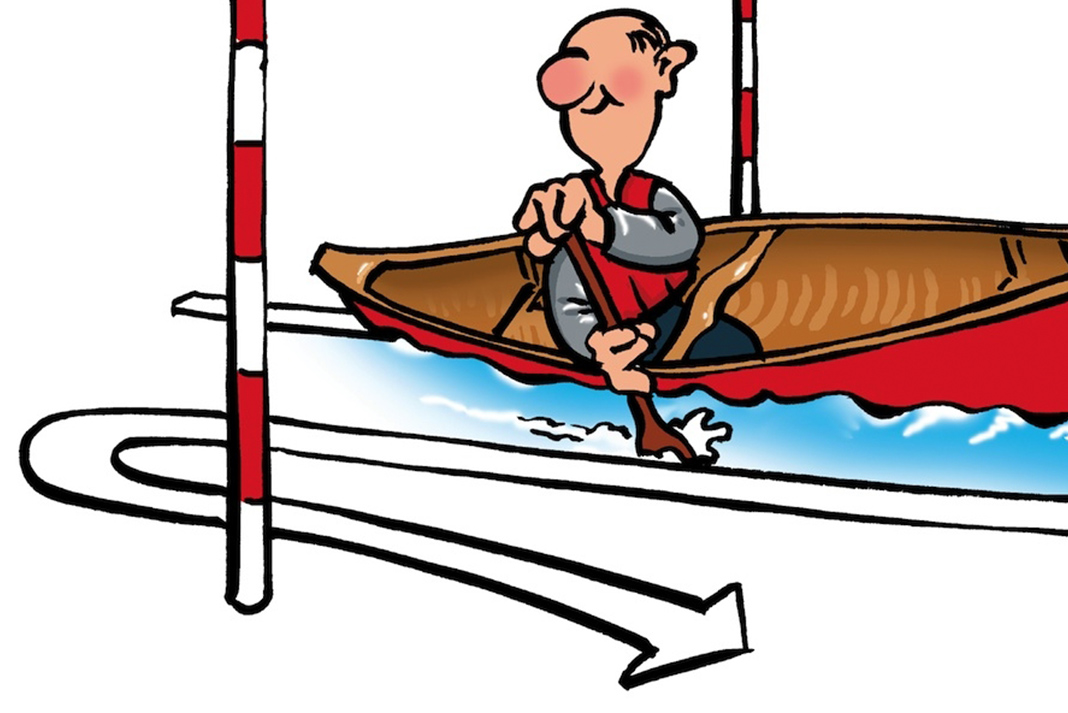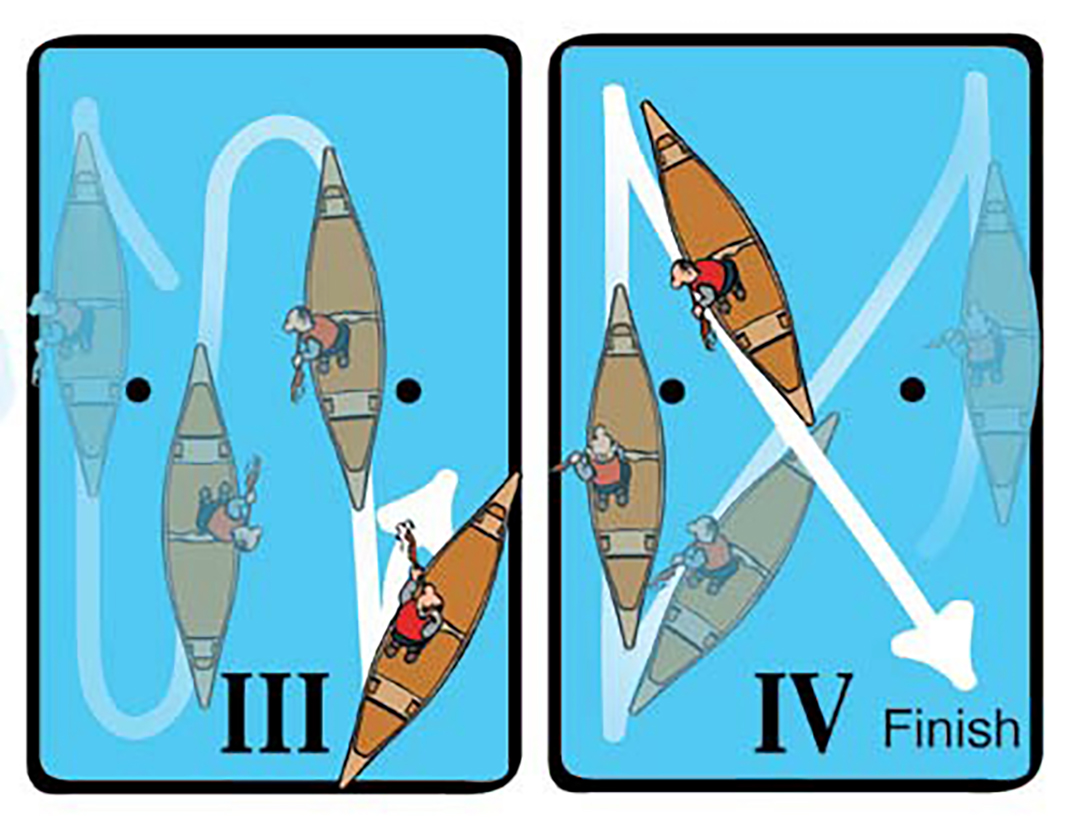A few years ago while at a canoeing symposium I took a break to go for a solo paddle. As I passed the beach a stranger launched his canoe and joined me. We continued along the breakwater chatting and paddling until he pointed with obvious pride at two buoys spaced a few feet apart and asked what I thought of his English gate.
I didn’t know what to say, because I didn’t know what it was.
It turns out it’s a simple but wildly effective skill-testing drill for flatwater and whitewater canoeists. He insisted he demonstrate it and I watched bewildered as he blazed through the gate.
His canoe slid forward and back, backward and sideways in precise movements close to, but not touching, the buoys. The English gate, I learned, is a routine, made up of four phases or patterns that you follow through the buoys. By seeing how quickly and cleanly you can put the canoe through the phases you will get an immediate assessment of your skill as a paddler. Not only does it demonstrate your weaknesses and strengths, but it rewards you with evidence of quicker and cleaner paddling as you repeat the drill and improve.
After a few botched runs I had it figured out and realized that it’s really a fancy figure-eight with a few flourishes thrown in to keep you honest. Sometimes when you pass a buoy you stop and paddle backwards, sometimes you spin the canoe and continue. The diagrams explain the patterns to follow. They seem a little simpler when you realize the fourth phase is the same as the second, just reversed.

Keep the following in mind to speed your progress
You’ll need strong, quick strokes on the straights to build momentum to carry you through the turns.
Before each pivot, shift your weight toward your paddling side for snappy turns. By keeping your speed up and paddling as close to the buoys as possible without touching, you will hone your control and efficiency. Paddle the gate often and you’ll notice yourself becoming more graceful and powerful in all your paddling.
This article was first published in Canoeroots & Family Camping’s spring 2009 issue. Subscribe to Paddling Magazine’s print and digital editions here , or browse the archives here.
Becky Mason is a canoeing instructor based in Chelsea, Quebec. She has contributed to several books, produced an award-winning video entitled “Classic Solo Canoeing,” and presents at canoe symposiums across North America.
Practice makes perfect. | Illustration by: Paul Mason









